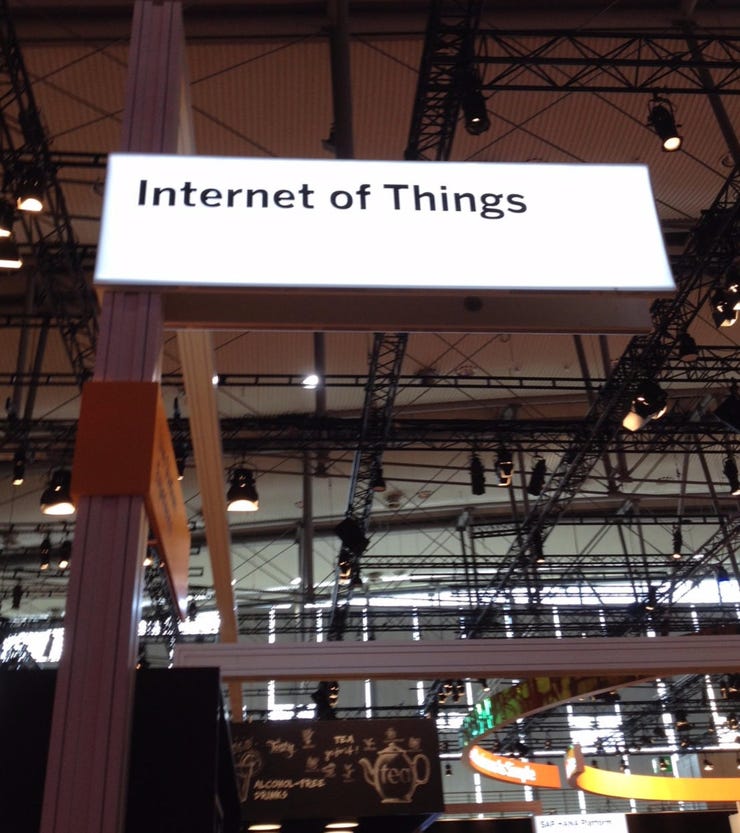Enter the Tangle, a blockchain designed specially for the Internet of Things

Blockchain and other distributed ledger technologies (DLTs) may be interesting ways to track and assure the validity of information as it's passed between entities or systems, and it has been weighed as a possible data exchange medium for devices and systems within the Internet of Things. But current blockchains and DLTs may have too much overhead for supporting millions of small-footprint devices.

That's the reasoning for the launch of a new approach, called the "Tangle," intended to weave devices, sensors and systems into a distributed, yet accountable network. To build and evangelize this new DLT for the IoT, the Eclipse Foundation and IOTA Foundation recently jointly launched the Tangle EE Working Group, based on the IOTA distributed ledger protocol.
I recently had the opportunity to chat with Christoph Strnadl, VP of innovation & architecture at Software AG and IOTA proponent, about this potential new messaging platform for the IoT. The key differentiator between DLTs such as blockchain and IOTA Tangle "is that it is optimized for the machine-to-machine economy," he says. The Tangle is designed to enable the collection of information on "billions of endpoints, millions of devices, as opposed to blockchain, which fails to scale when we have a few thousand nodes." While other DLTs are intended to simply support cryptocurrency and financial exchanges, the Tangle is designed to manage information on the identity of devices, and having the ability to send and execute messages. Because this is what links the devices to the IoT platform and to the providers and supply chain networks."
IOTA Tangle is intended to run across "a continuum of devices, a continuum of edge computing facilities," Strnadl says. "Then everything is able to participate -- even if it's just a very small sensor. You can hook the sensors up to a node, and you can outsource information." The Tangle also supports the ability to send and execute on messages, Strnadl says. This enables machines such as robots to "deliver an order or reliably transmit a status report which can be used for billing. This is what links the devices to the IoT platform and to the providers, and supply chain networks." Another important function supported within the Tangle is smart contracts, he adds.
IOTA Tangle is designed to offer an alternative approach to blockchain for IoT payments and data use cases given its fee-less nature and the ability for secure data transfer in machine-to-machine communication. The network is built on a Directed Acyclic Graph (DAG) as a way to address what are seen as typical blockchain shortfalls related to scalability, environmental sustainability, cost, and security. "Unlike blockchain, which has an inherent transaction rate limit, the Tangle allows different branches of the DAG to spread and merge, resulting in a much faster overall throughput," according to IOTA. "The result is an open-source framework that is scalable, fee-free, and permissionless, thus eliminating previous barriers to use and making its application much easier for organizations of all kinds."
Typical blockchains "all feature a data structure which is a naming device that lists lead blocks, and every block contains a few thousand transactions," Strnadl explains. "Someone has to approve all the thousands of transactions in a block, digital mining, and then you mine the next block and approve a thousand more translocation. It is a very costly operation in terms of energy and computing resources."
Strnadl expects an eventual consolidation in DLT offerings, with IOTA Tangle covering small transaction and IoT information requirements. At this point, however, there is no integration likely between Tangle and other DLTs likely, he adds. "It's very hard to mix from one model to another.."
Founding members of the Tangle EE group include: Dell Computers , STMicroelectronics, Objects Management Group , accessec, BiiLabs, Calypso Network Association, Geometric Energy Corporation, RWTH Aachen University, Software AG , Industrial Internet Consortium, AKITA and Xain. Initial target industries for Tangle EE's commercialization of IoT payments infrastructure include mobility and automotive, global trade and supply chain, ehealth, smart energy, smart cities, and industrial IoT .